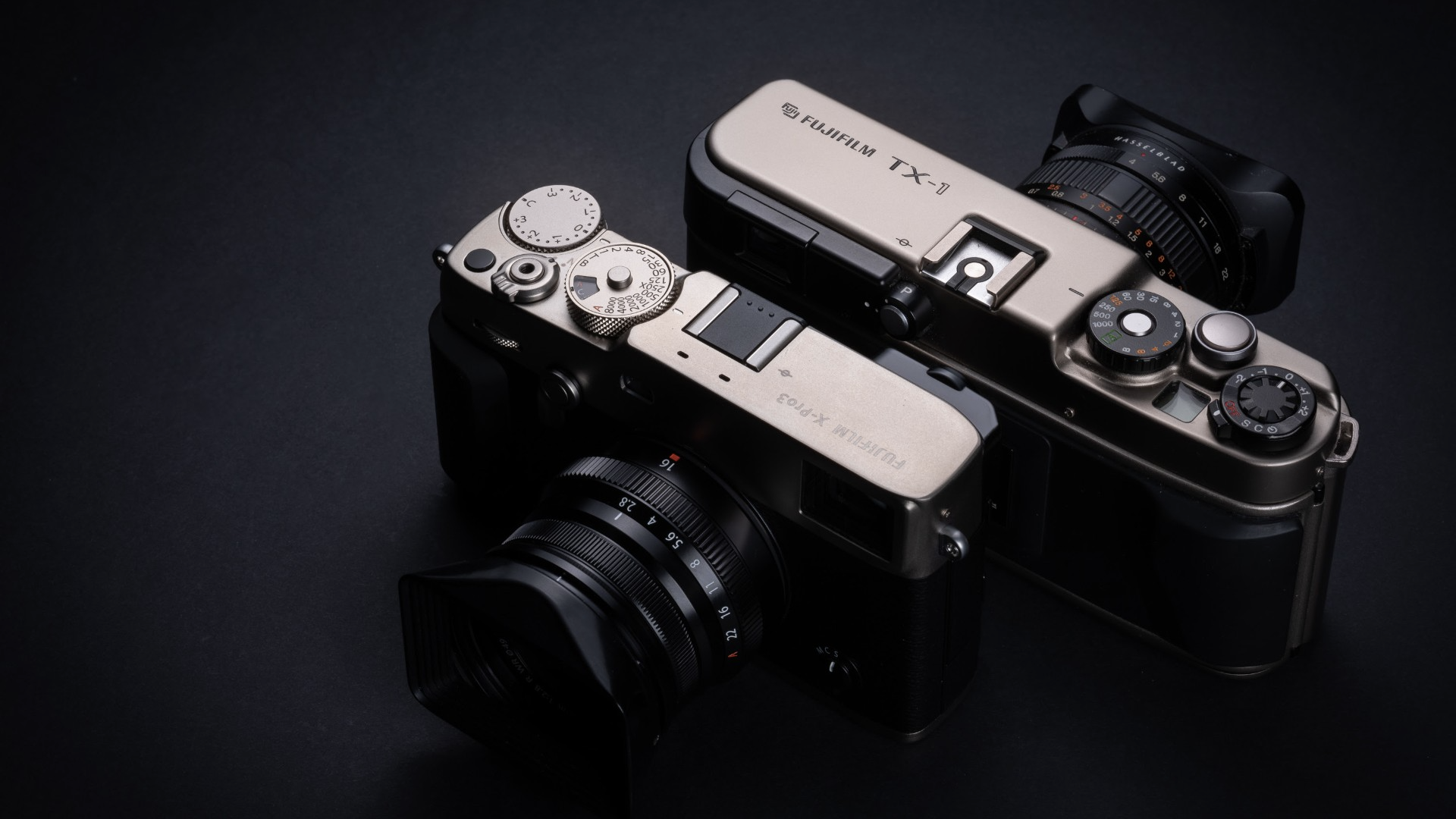Fujifilm X-Pro3 delivers retro charm in a high-tech package
Includes AF in the dark and a new HDR shooting mode

Fujifilm has announced the latest camera in its X-series range, the X-Pro3, and it's housing some innovative tech beneath its analog rangefinder-style exterior, as well as a novel 'inside-out' rear screen.
The X-Pro3 succeeds the Fujifilm X-Pro2 and boasts a 26.1MP back-illuminated X-Trans 4 CMOS IV sensor, an upgrade over the 24MP X-Trans CMOS III sensor in the X-Pro2.
- Camera rumors 2019: the biggest and best camera rumors around
- The 10 best mirrorless cameras right now
- Read our in-depth Fujifilm X-T3 review
This has enabled Fujifilm to improve the autofocus algorithms for the X-Pro3, giving the new camera the ability to focus at -6EV – for context, this means the X-Pro3 should be able to focus on subjects in practically pitch-black conditions.
Hidden display
For composing shots you can switch between an optical viewfinder and an EVF with a 3.60 million-dot resolution and a high contrast ratio of 1:5000. A couple of display options have also been built into the EVF's performance mode, which might come in handy when shooting fast-moving objects.
There's also a new and innovative 'hidden display' – instead of a traditional 3-inch LCD display there's a two-sided flip frame with the actual LCD screen on the inside, meaning it's hidden most of the time.
On the outer side of this flip frame is a smaller 1.28-inch color LCD screen, made from toughened glass, which displays shooting information such as exposure, aperture, shutter speed and ISO settings.
The hidden LCD display itself shares the same 1.62 million-dot resolution of the X-Pro2's screen, but here it's a touchscreen that can flip 180 degrees to allow you to shoot from different angles.
Get daily insight, inspiration and deals in your inbox
Sign up for breaking news, reviews, opinion, top tech deals, and more.
Shooting modes for every situation
A new HDR shooting mode combines multiple shots taken at different exposure settings into one final shot, to bring out every possible detail in your photography. The different setting include Additive, Average, Comparative Bright, and Comparative Dark, and if you want to get creative, you can apply Fujifilm's Film Simulation modes to each frame to create a multi-layered collage.
There's a new Film Simulation mode, too; Classic Neg emulates images shot on color negative films, adding chromatic contrast to the results.
It also has buffer capacity of 42 raw files or 145 JPEGs – or 30fps with the electronic shutter in 1.25x crop mode, which is pretty impressive. The X-Pro3 can record video in 4K up to 30fps, which is the same capability as the X-Pro2.

The body is constructed from corrosion-resistant titanium, and is weather-sealed at 70 different points, ensuring that the X-Pro3 should be able to survive just about any conditions you need to shoot in.
So, how much does all this cost? For the basic Classic Black version body alone, you're looking at $1,699.99 / £1,699.99 / AU$2,699 – which is the same as the X-Pro2's launch price – and you can preorder it now but will begin shipping on November 28.
On the other hand, if you're after the tougher DURA versions in Black and Silver, then the price tag you'll be greeted with is $1,999 / £1,879 / AU$2,999 and they will go on sale from mid-December in most markets (if you're in Australia, you'll need to wait till late December).
Olivia was previously TechRadar's Senior Editor - Home Entertainment, covering everything from headphones to TVs. Based in London, she's a popular music graduate who worked in the music industry before finding her calling in journalism. She's previously been interviewed on BBC Radio 5 Live on the subject of multi-room audio, chaired panel discussions on diversity in music festival lineups, and her bylines include T3, Stereoboard, What to Watch, Top Ten Reviews, Creative Bloq, and Croco Magazine. Olivia now has a career in PR.
